Projects
Projects with IMCCE PI‑ship
FRIPON
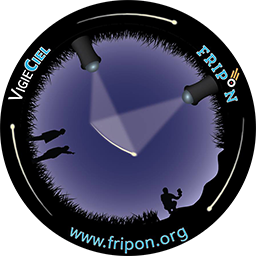
FRIPON (Fireball Recovery Interplanetray Observation Network), was conceived for three main objectives: i) determine the source region of various meteoritic classes; ii) collect fresh meteoritic matter and iii) perform scientific outreach. FRIPON objectives are achieved mainly based of more than 100 allsky cameras for the surveillance in the visible, and more than 20 radio receivers. The network uniformly covers the France’s surface. (https://www.fripon.org)
MesoPSL
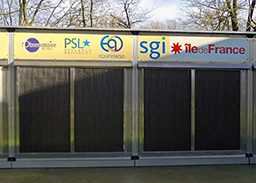 MesoPSL is the parallel computing center of PSL, member of the equip@meso project. It federates the users in intensive calculus within the large establishments of PSL (ENS, Observatory of Paris, Chemistry Paris, ESPCI, Paris Dauphine University…) by creating a community of researchers and numerériciens engineers. MesoPSL now hosts more than 50 projects in all disciplines. His machines help to understand the structure of extra solar planets, the properties of luminescent organic switches, the origin of the earth dynamo, or the arithmetic properties of whole numbers.
MesoPSL is the parallel computing center of PSL, member of the equip@meso project. It federates the users in intensive calculus within the large establishments of PSL (ENS, Observatory of Paris, Chemistry Paris, ESPCI, Paris Dauphine University…) by creating a community of researchers and numerériciens engineers. MesoPSL now hosts more than 50 projects in all disciplines. His machines help to understand the structure of extra solar planets, the properties of luminescent organic switches, the origin of the earth dynamo, or the arithmetic properties of whole numbers.
MesoPSL is installed on the Meudon site, in a container with particularly efficient direct air cooling with a PUE of 1.02. MesoPSL is accessible to all PSL researchers. Resources are allocated by its steering committee, on project. The requests are made over the water through the user interface of the MesoPSL website (www.mesopsl.fr).
NAROO
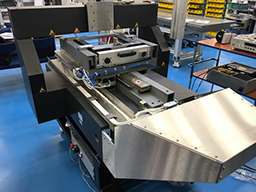 The NAROO (New Astrometric Reduction of Old Observations) digitization centre is a project supported by IMCCE, IPSA, DIM-ACAV, PSL, Paris Observatory, and PN GRAM. The NAROO digitizer is a new-generation sub-micrometric instrument for astro-photographic plates, dedicated to the Solar System metrology, and more generally, that of our Universe. The main goal is to provide new astrometric positions over long time spans for planets, natural satellites and small bodies, typically from 1890 to 2000 but with the milli-arcsecond accuracy. This work be used to improve the dynamical models of these bodies, to detect and measure the smallest cumulative effects, and to propose formation and evolution scenarios. For further details, please refer to the PSL page dedicated to the NAROO project.
The NAROO (New Astrometric Reduction of Old Observations) digitization centre is a project supported by IMCCE, IPSA, DIM-ACAV, PSL, Paris Observatory, and PN GRAM. The NAROO digitizer is a new-generation sub-micrometric instrument for astro-photographic plates, dedicated to the Solar System metrology, and more generally, that of our Universe. The main goal is to provide new astrometric positions over long time spans for planets, natural satellites and small bodies, typically from 1890 to 2000 but with the milli-arcsecond accuracy. This work be used to improve the dynamical models of these bodies, to detect and measure the smallest cumulative effects, and to propose formation and evolution scenarios. For further details, please refer to the PSL page dedicated to the NAROO project.
AstroMeso / AstroGeo
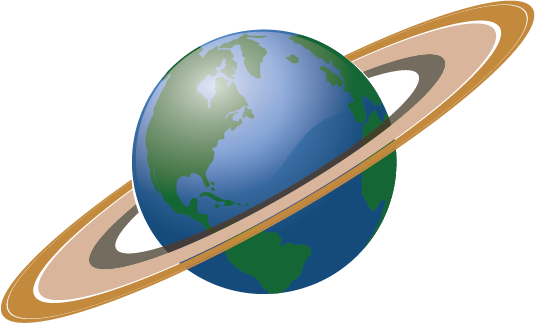 According to Milankovitch’s theory (1941), the large climatic changes of the past are due to the variations of the Earth’s orbit and its axis of rotation, resulting from the gravitational attraction of the other planets and the Moon. These variations can be traced over millions of years (Ma) in sedimentary records. As the solar system motion is chaotic, it is not possible to retreive the precise orbital movement of the planets beyond 60 Ma. The ANR AstroMeso and ERC AstroGeo projects aim to break this predictability horizon and to provide the basis for an astronomical solution over a large part of geological time. This will be possible by using the input geological data, in order to constrain the astronomical solution.
According to Milankovitch’s theory (1941), the large climatic changes of the past are due to the variations of the Earth’s orbit and its axis of rotation, resulting from the gravitational attraction of the other planets and the Moon. These variations can be traced over millions of years (Ma) in sedimentary records. As the solar system motion is chaotic, it is not possible to retreive the precise orbital movement of the planets beyond 60 Ma. The ANR AstroMeso and ERC AstroGeo projects aim to break this predictability horizon and to provide the basis for an astronomical solution over a large part of geological time. This will be possible by using the input geological data, in order to constrain the astronomical solution.
BIRDY
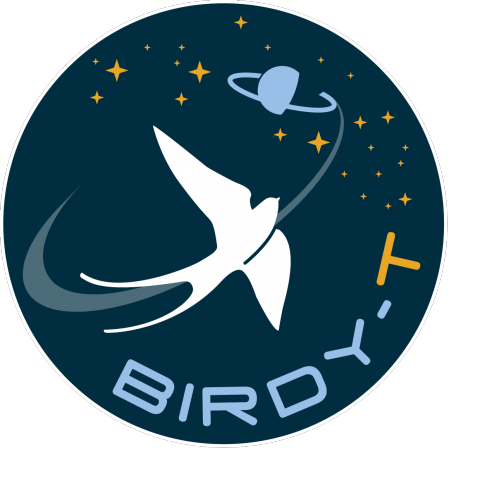 The study of small bodies of the solar system (asteroids, comets, satellites) is fundamental both for our understanding of the formation of the solar system and for characterising the risk of a near-Earth object impacting the Earth. Knowledge of the internal structure of small bodies - from a few tens of meters to a few kilometers in size - is a key element. Nanosatellites offer a new opportunity to determine the mass (density, porosity, mass distribution, etc.) of these small bodies using relative measurements taken in close proximity. In particular, radio-science and orbit determination techniques are promising if we exploit the possibilities offered by the links (radio and optical ISL) between several satellites. New concepts are also being developed to reduce operating costs and the complexity of this type of mission, thanks to on-board orbit determination (IFOD). The goal of BIRDY is to be an accompanying nanosatellite for future interplanetary exploration missions, or to act as a reconnaissance mission to a (potentially) hazardous asteroid. The BIRDY team is currently building RF and IFOD test benches, which will be ready in 2024. A possible scientific mission would target the passage of the asteroid Apophis near Earth in 2029. The BIRDY team is led to Paris Observatory by IMCCE with a contribution from LESIA and CENSUS.
The study of small bodies of the solar system (asteroids, comets, satellites) is fundamental both for our understanding of the formation of the solar system and for characterising the risk of a near-Earth object impacting the Earth. Knowledge of the internal structure of small bodies - from a few tens of meters to a few kilometers in size - is a key element. Nanosatellites offer a new opportunity to determine the mass (density, porosity, mass distribution, etc.) of these small bodies using relative measurements taken in close proximity. In particular, radio-science and orbit determination techniques are promising if we exploit the possibilities offered by the links (radio and optical ISL) between several satellites. New concepts are also being developed to reduce operating costs and the complexity of this type of mission, thanks to on-board orbit determination (IFOD). The goal of BIRDY is to be an accompanying nanosatellite for future interplanetary exploration missions, or to act as a reconnaissance mission to a (potentially) hazardous asteroid. The BIRDY team is currently building RF and IFOD test benches, which will be ready in 2024. A possible scientific mission would target the passage of the asteroid Apophis near Earth in 2029. The BIRDY team is led to Paris Observatory by IMCCE with a contribution from LESIA and CENSUS.
Projects with IMCCE involvement
Gaia: mapping our Galaxy
 The astrometry space mission Gaia is an ESA (European Space Agency) cornerstone mission, aiming to provide a census and a kinematic cartography in 3 dimensions of our Galaxy, and beyond. This ambitious project brings an unprecedented harvest of data and will beat some records at the end of his 5 years of mission: 1 billion pixels in space, to observe 1 billion stars, and measured with precision of 1 billionth of a degree (μarcsec), and ultimately collect a million billion bytes of data (PetaByte). In addition to the stars and extragalactic sources, Gaia regularly and continuously observes about 350,000 asteroids—about half of the known population—and other bodies of the Solar System, down to magnitude V ≈ 20.5. All the data is processed, reduced and analyzed by an European consortium of researchers and engineers, DPAC. Astrometric, photometric and spectroscopic data of these bodies will provide a huge leap in our knowledge of the Solar System, or on fundamental physic tests (mass determinations, Yarkovsky effect detection, age of collisional families, stellar occultations prediction, gravitation tests…). In addition, the Gaia-FUN-SSO ground-based observation network has been set-up to carry out observations on alert, and to follow up newly discovered objects (including those of the GBOT program...). Gaia has already provided a large amount of data through several intermediate catalogs: DR1, first data release in 2016, DR2, second data release in 2018, eDR3, early data release in 2020, and DR3 third data release in 2022, with the latter three catalogs providing data on solar system objects directly.
The astrometry space mission Gaia is an ESA (European Space Agency) cornerstone mission, aiming to provide a census and a kinematic cartography in 3 dimensions of our Galaxy, and beyond. This ambitious project brings an unprecedented harvest of data and will beat some records at the end of his 5 years of mission: 1 billion pixels in space, to observe 1 billion stars, and measured with precision of 1 billionth of a degree (μarcsec), and ultimately collect a million billion bytes of data (PetaByte). In addition to the stars and extragalactic sources, Gaia regularly and continuously observes about 350,000 asteroids—about half of the known population—and other bodies of the Solar System, down to magnitude V ≈ 20.5. All the data is processed, reduced and analyzed by an European consortium of researchers and engineers, DPAC. Astrometric, photometric and spectroscopic data of these bodies will provide a huge leap in our knowledge of the Solar System, or on fundamental physic tests (mass determinations, Yarkovsky effect detection, age of collisional families, stellar occultations prediction, gravitation tests…). In addition, the Gaia-FUN-SSO ground-based observation network has been set-up to carry out observations on alert, and to follow up newly discovered objects (including those of the GBOT program...). Gaia has already provided a large amount of data through several intermediate catalogs: DR1, first data release in 2016, DR2, second data release in 2018, eDR3, early data release in 2020, and DR3 third data release in 2022, with the latter three catalogs providing data on solar system objects directly.
Europlanet: a European network of planetology labs
 The goal of the H2020 European project Europlanet-Research Infrastructure is to set up a structure linking the European laboratories of planetary sciences. In this framework, Europlanet help them to develop and to give access to databases and related services, to share excellent experimental tools, and more generally it fosters international cooperation between researchers in planetary sciences. IMCCE is a member of Europlanet, in particular in activities regarding the dynamics of asteroids, their physical and shape characterization, and the study of meteoroid streams.
The goal of the H2020 European project Europlanet-Research Infrastructure is to set up a structure linking the European laboratories of planetary sciences. In this framework, Europlanet help them to develop and to give access to databases and related services, to share excellent experimental tools, and more generally it fosters international cooperation between researchers in planetary sciences. IMCCE is a member of Europlanet, in particular in activities regarding the dynamics of asteroids, their physical and shape characterization, and the study of meteoroid streams.
VESPA (Virtual European Solar and Planetary Access) is an important workpackage of Europlanet 2020. Its goal is to build a Virtual Observatory in planetology. VESPA gives therefore access to a wide selection of VO compliant data in planetology and to VO tools useful to explore these data, to vizsualize them, to make cross checking and to apply models. IMCCE has contribution to this activity, in particular by delivering the DynAstVO database regarding the Near Earth Objects and synchronized on daily updates.
Research groups
DIM ORIGINES
The “Domaine d’Intérêt Majeur”, of the Île-de-France region, supports research in the fields of Astrophysics and the Conditions of Appearance of Life.
FSMP
Fondation Sciences Mathématiques de Paris (FSMP) is an excellence network in mathematics and fundamental computer science in Paris, founded by CNRS, ENS, université Pierre-et-Marie-Curie, université Paris-Diderot, and the 4 Mathematics Chairs of Collège de France. Partners are Inria, universities of Paris-Dauphine, Paris-Descartes, Paris 1 Panthéon-Sorbonne, Paris-Nord, and the IdEx PSL (teams of Ecole des Mines, Observatoire de Paris and EHESS).
GRGS
The Space Geodesy Research Group (GRGS) is a scientific consortium that brings together 12 French research teams. Each of these teams belong to national institutions that work in space geodesy
PSL-Maths
IMCCE is part of the project PSL-Maths. This project gathers a large variety of research units of Paris-Sciences et Lettres, from the mathematics laboratories (ENS, université Paris-Dauphine) to smaller teams belonging to laboratories whose main theme of research is not mathematics. The goal is to boost interactions among these research units, both for research and teaching.
To consult the list of past projects, click on the following link: : Past projects
Last update Friday 22 September 2023